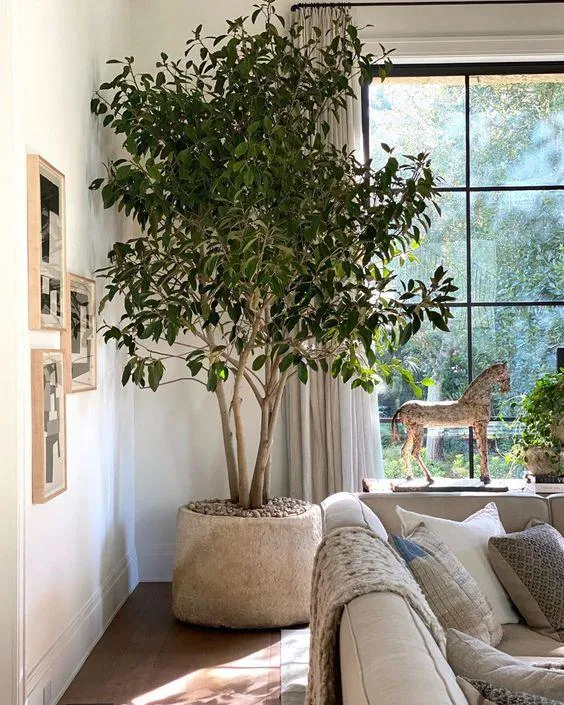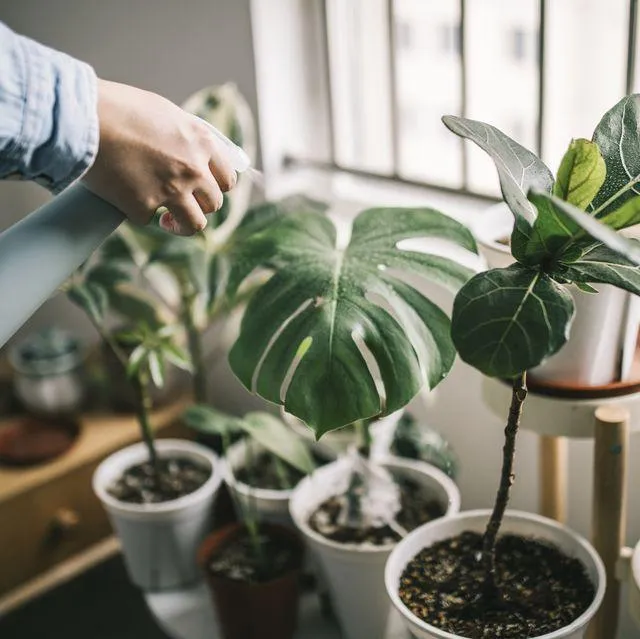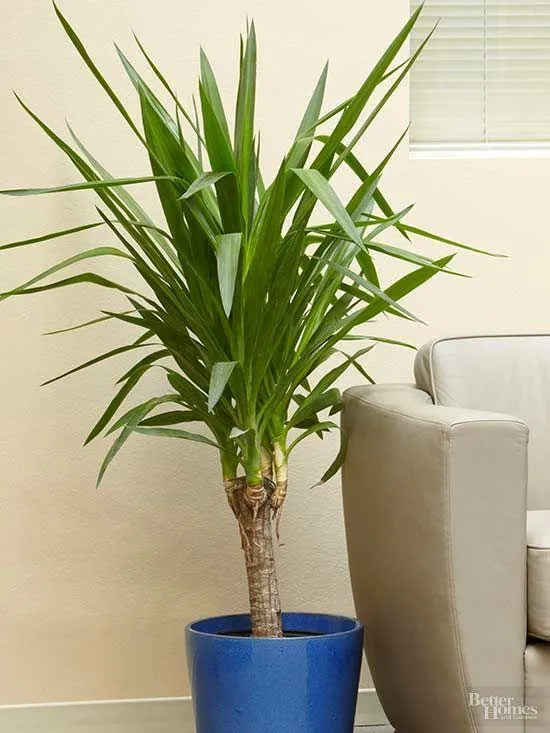Top Indoor Trees for Your Home
If you’re looking to add some refreshing greenery to your indoor spaces but don’t have a yard, don’t worry – there are plenty of excellent tree options that thrive inside. In this article, I’ll break down the best trees to grow inside based on factors like size, care needs, and aesthetic appeal. By the end, you’ll know which indoor trees are most suitable for your living situation.
Size Matters
When choosing an indoor tree, the first thing to consider is the available space. Some tree varieties stay small and compact, while others can grow quite large over time. From my experience, it’s best to start with a dwarf variety if you’re new to growing trees indoors.
- Bonsai trees – At just a few inches tall, bonsai are perfect for placing on desktops or shelves. They require minimal care but provide a stunning miniature tree look.
- Dwarf fruit trees – Varieties like dwarf lime, lemon and orange trees max out around 5 feet tall and 2 feet wide, fitting nicely in a sunny window. The bonus is you get to enjoy their tasty fruits!
- Jade plant – Not technically a tree but taking on a bonsai-like form, jade plants stay under 2 feet and are extremely easy to care for.
As you gain experience, you can graduate to medium-sized varieties that will fit in most living spaces. Just be sure to measure clearance heights if placing near ceilings!
Light Needs
The type and amount of light available will determine which trees can thrive indoors. In general, trees need at minimum a few hours of bright, indirect sunlight each day for optimal growth. East or west-facing windows often work best to avoid harsh afternoon sun.
Plants labeled as low-light tolerant include the always-popular peace lily and Chinese evergreen. However, if you have a very shady spot, consider grow lights as even low-light trees may struggle without a supplemental artificial source.

Speaking from experience, the snake plant is about as tough as they come when it comes to tolerating low light. It’ll survive in near darkness if you water it infrequently! For the brightest conditions, citrus trees like Meyer lemon or kumquat are top performers.
Water and Care Routines
Establishing a regular watering schedule is crucial for indoor trees. As a rule of thumb, allow the top 1-2 inches of soil to dry out between waterings. But conditions vary based on factors like light, temperature and pot size.
In my experience, the easiest trees to care for require water just once every 1-2 weeks. Snake plants, ZZ plants and Chinese evergreens are virtually indestructible in this regard. Another great low-maintenance pick is the hardy rubber plant – it basically tells you when it needs a drink by drooping its leaves.
On the other hand, citrus trees tend to be thirstier and prefer weekly watering during their growing season. Some varieties like fiddleleaf figs also demand high humidity, so a pebble tray or humidifier helps prevent leaf drop.
Whatever you select, gently disturbing the roots when repotting every couple years keeps an indoor tree thriving for many happy seasons to come! Just be careful not to over-pot, as wet soil can cause root rot over time in my experience.

Aesthetics and Ambiance
Finally, choose a tree you find genuinely appealing to look at day after day. Consider how its appearance and textures will complement your home’s design style.
For modern or minimalist spaces, clean-lined monsteras, dracaenas or peace lilies create crisp focal points. More traditionally styled rooms pair beautifully with feathery ferns, ornate calatheas or fiddleleaf figs.
If you want a tree with seasonal interest, scheffleras sport eye-catching marbled leaves while colorful crotons put on a real show. Meanwhile, bamboo’s graceful canes lend an air of tranquility and bamboo palm fronds instill a tropical vibe.
No matter your personal taste, there’s surely an indoor tree out there to suit your aesthetic. With some TLC, it will enhance your home’s vibe for many years to come – not to mention the health benefits of simply gazing at living plants, as countless studies have shown.
To summarize, the top overall picks for growing inside based on all these factors are snake plants, pothos, ZZ plants, bamboo palms and peace lilies. But with a little research into light, size and care needs, you’re sure to find an indoor tree pal that becomes a treasured companion. I hope this guide has helped answer your questions so you can pick the perfect plant friend. Let me know if any other aspects need more clarity!

Top Houseplants for Indoor Growing
| Plant | Size | Light Needs | Watering | Care Level |
|---|---|---|---|---|
| Pothos | Varied | Low | Let dry halfway between waterings | Easy |
| Snake Plant | Tall | Low | Let dry completely between waterings | Very easy |
| Peace Lily | Medium | Medium | Let dry halfway between waterings | Easy |
| Chinese Evergreen | Medium | Medium | Let dry halfway between waterings | Easy |
| Dieffenbachia | Tall | Medium | Let dry halfway between waterings | Easy |
FAQ
-
What are some popular houseplants for inside?
Some commonly grown indoor trees include the rubber plant, peace lily, ficus tree, and Chinese evergreen. These trees tend to tolerate low-light conditions found inside homes pretty well.
-
What tree grows well with little sunlight?
Chinese evergreen is a great choice for a low-light area. They can survive with just north-facing windows or fluorescent office lighting. Spider plants also do well with only a few hours of sunlight each day. Ferns and pothos are other options that don’t demand too much light.
-
Do indoor trees require a lot of care?
Most indoor trees need water around once a week and mild fertilizer every few months. They don’t typically need lots of ongoing maintenance. However, you do got to keep an eye out for pests and remove any sick or dry leaves. It’s a small effort for the joy these trees supply.
-
Which tree thrives in small spaces?
For tight quarters, try a miniature citrus tree or bonsai. Their small stature allows them to fit almost anywhere. Hoyas and Peace lilies also stay comparatively compact. You could even try a dwarf date palm if you got some height to work with. I guess it depends how much room you got to spare.
-
How do you transport an indoor tree?
Carefully wrap the root ball in plastic and secure the plant stem. Then move it slowly and avoid sudden bumps. It likely feels as stressed as you would be! Give it some extra TLC afterwards like water and maybe even a peptalk. On the bright side, a new landscape can stimulate further growth.

-
Are some indoor trees better than others for air quality?
Certain species remove toxins from the air better than others. The NASA Clean Air Study found spider plants, Boston ferns and English ivy to be remarkable at eliminating chemicals like formaldehyde. Some theorize that trees with lush greenery have larger surface areas for absorption. You might feel better breathing around these all-stars!
-
Do indoor trees increase humidity?
Yes indeedy, trees definitely boost humidity which is usually pretty low inside. Their leaves release moisture into the air through transpiration. Considering dry indoor heating can zap moisture even more, trees supply a natural solution. My skin feels less itchy just thinking about it. On the other hand, too much humidity invites mold—so aim for a cozy 40-50%.
